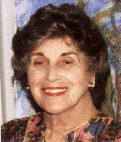


 http://www.nlm.nih.gov/hmd.dir/lesser.dir/lesser_2.html (Einblicke ins Internet, 10/1995)
http://www.nlm.nih.gov/hmd.dir/lesser.dir/lesser_2.html (Einblicke ins Internet, 10/1995)This is my fourth exhibit over the last 20 years in a series presenting medicine and social healing in our century. When I reviewed my first book, from which the first exhibit was taken (auditing medical school at UCLA, with the Class of '71), and the second, about medical education in its entirety (from the student's first days until a physician's first professional experiences, in the '80's), I realized that another look was timely. I have always focused on the motivations of health care practitioners, as well as their human endeavors. I admire those who study and train to help others at this high level of knowledge and skill, which takes years to achieve and much personal sacrifice. And even with today's technologies and mechanical devices, the traditions of nurturing and intimacy are still here. So again, I show the human side of medicine through images of these physicians at work in their research laboratories, by their patients' bedside, in the operating room, and at conference and studies, but now aided with new knowledge. There is an enormous amount of creative energy expended in healing and dealing with the medical enigmas of life.
I place these 27 drawings on a balance sheet of "miracles" and "deficits": We are beginning to understand recombinant gene therapy. We have MRI for diagnosis, drugs and machinery to aid surgery for transplanting organs and to repair the hearts of newborns and to keep the very young and old alive. World-wide medical computer programs extend knowledge. But, we have a darker nature: we have crises in emergency rooms due to guns, child abuse, alcohol and drugs. We have an epidemic rise of AIDS, low birth weight and crack babies, many of whom will be permanently damaged. In my home city, one-third of the children receive only emergency medical care and one fourth live below the poverty line, breeding crime and illness. How we treat the defenseless among us, the ill, the very young and old, the poor, is as much a measure of the greatness of our civilization as our vaunted discoveries. We have come to know a lot more than we have implemented.
May H. Lesser, the daughter, sister, wife and mother of physicians, is a graduate of the H. Sophie Newcomb College, Tulane University, with honors in drawing. She studied anthropology at Columbia University and child psychiatry at the Johns Hopkins University. She received a master's degree in painting from the University of Alabama and did further graduate work at UCLA. She was granted the Tiffany Graphics Art Award and taught printmaking at the UC, Irvine.
She, as an artist, has had the rare experience of being "on-the-inside" of the medical centers of UCLA, the University of Southern California and Tulane University. Her work has been exhibited at UCLA, and UC, Irvine, Tulane University and Louisiana State University, the University of Miami, the University of Southern California, Case Western Reserve University, the Seattle Museum of Art, California State College at Long Beach, the Detroit Institute of Art, the Smithsonian Institution, the University of Pittsburgh, the National Academy of Design, the George Washington University, the Clinical Center of the National Institutes of Health, and the National Library of Medicine.
Her etchings and drawings are in the permanent collection of the Weatherspoon Gallery, the University of North Carolina, the Oklahoma Art Center, the ARS Medica Graphic Art Collection at the Philadelphia Museum of Art, the Grunwald Graphic Art Foundation at UCLA, the Darling BioMed Library of UCLA, the Calder Medical Library of the University of Southern California, the New Orleans Museum Art and the National Library of Medicine. She published two books, The Art of Learning Medicine (Appleton-Century-Crofts, N.Y., 1974) and An Artist in the University Medical Center, (Tulane University Press, N.O., 1989), which won the Best Art Book of 1990, Mary Ellen Lopresti Publication Award of the Southeastern Art Librarians Association. Her color etchings and drawings have appeared on eleven covers of the Journal of the American Medical Association.
[A supplementary collection of work by the artist which did not appear in the original NLM exhibit is also available via this online exhibition]